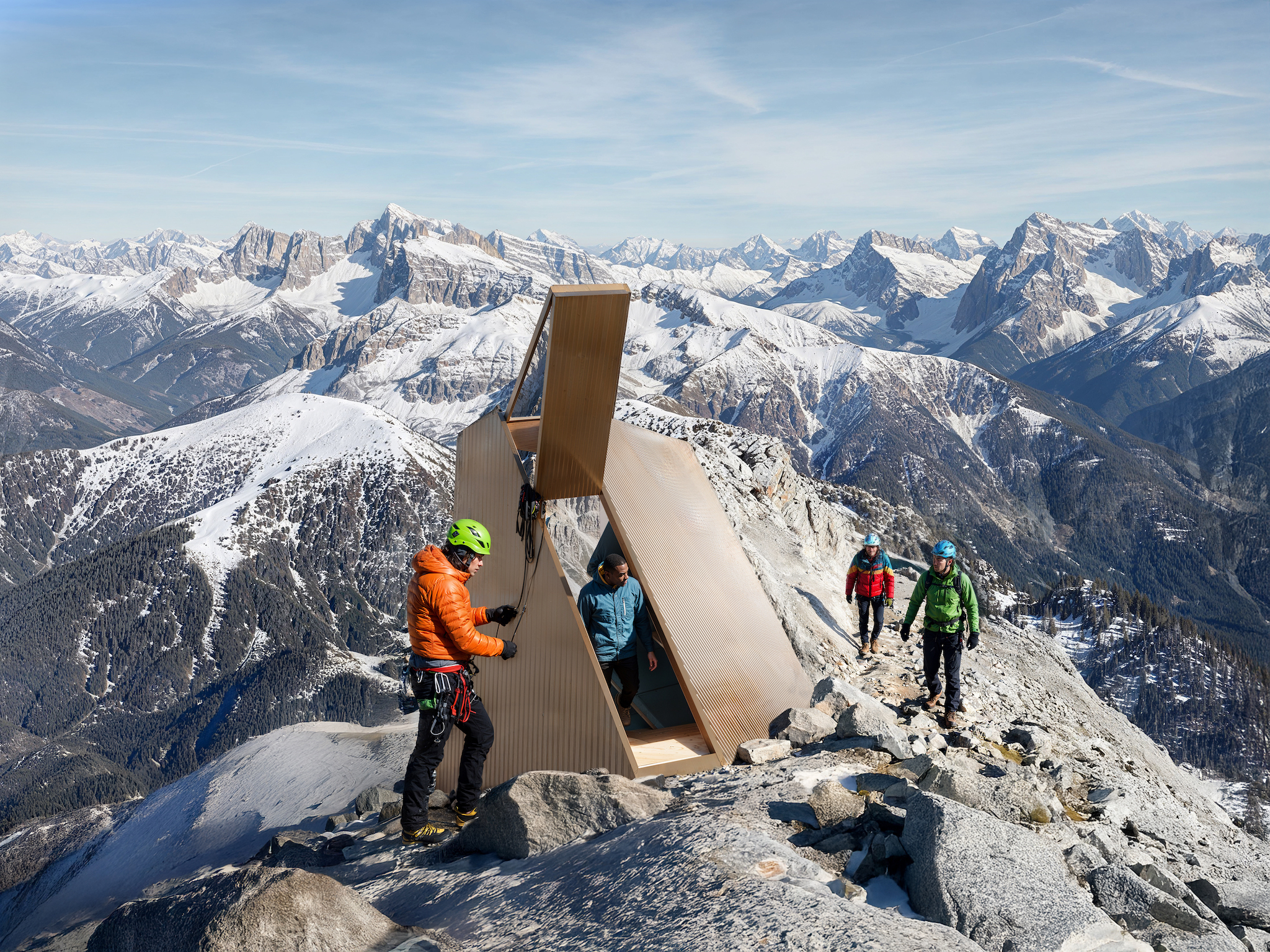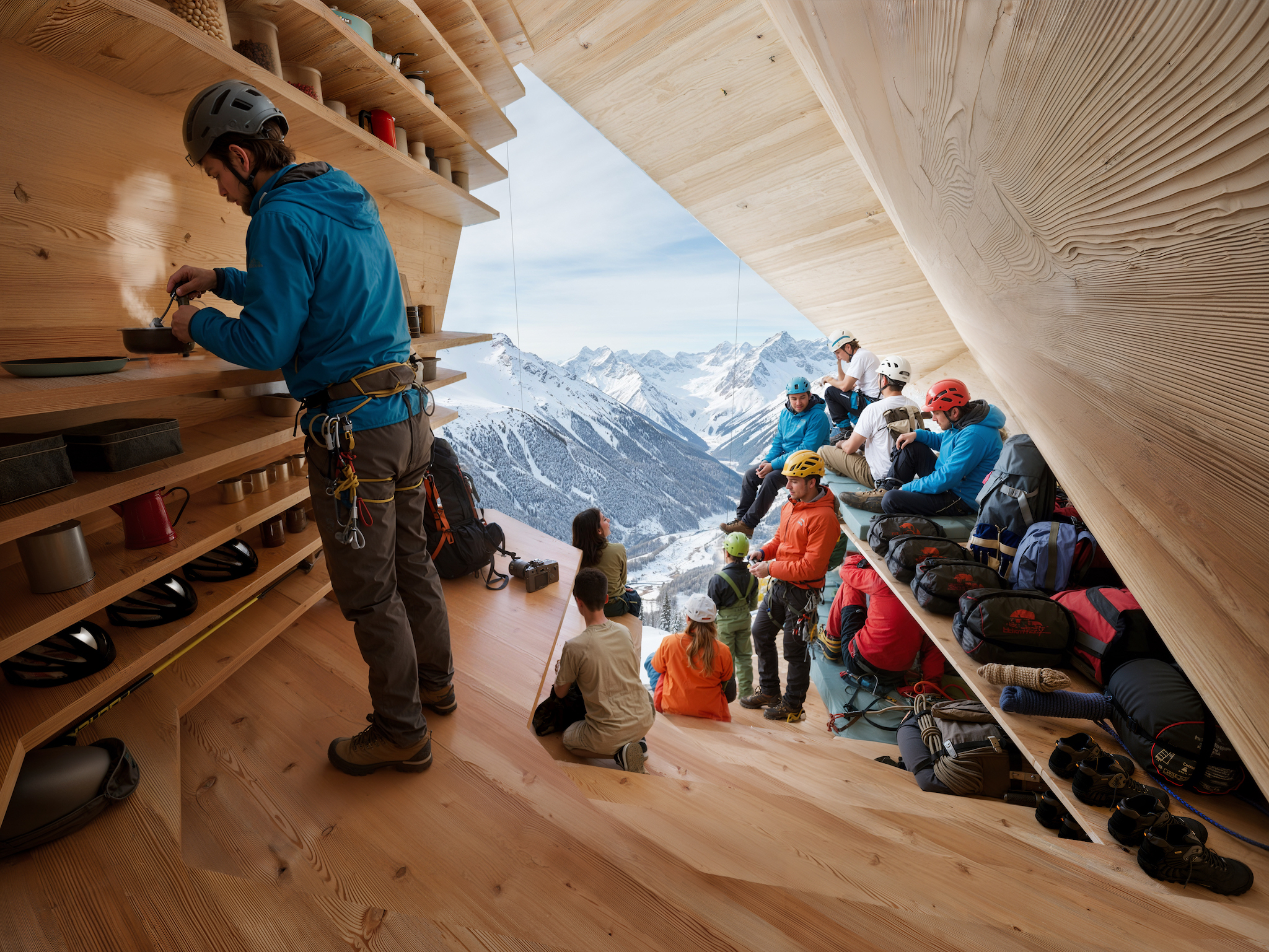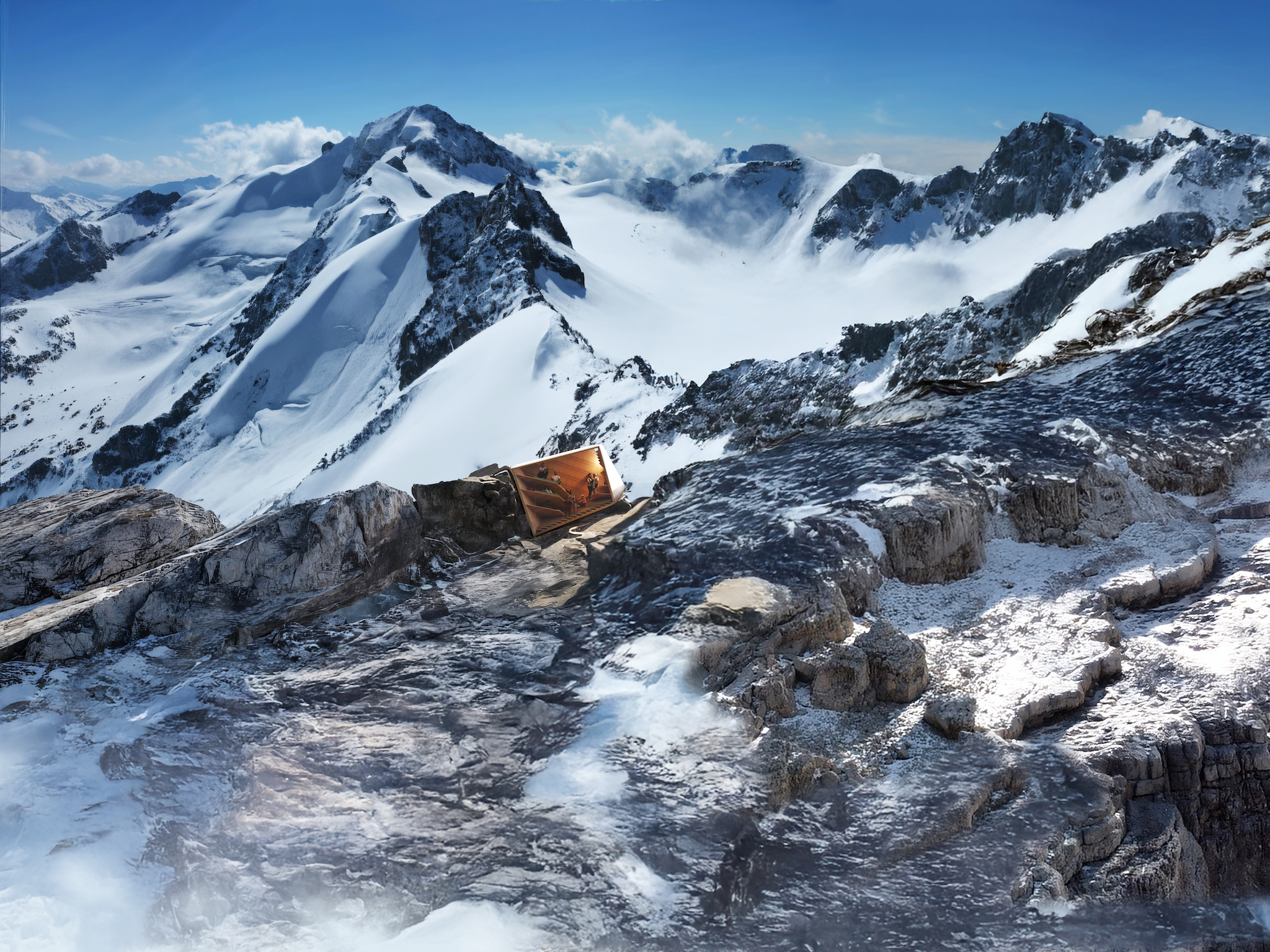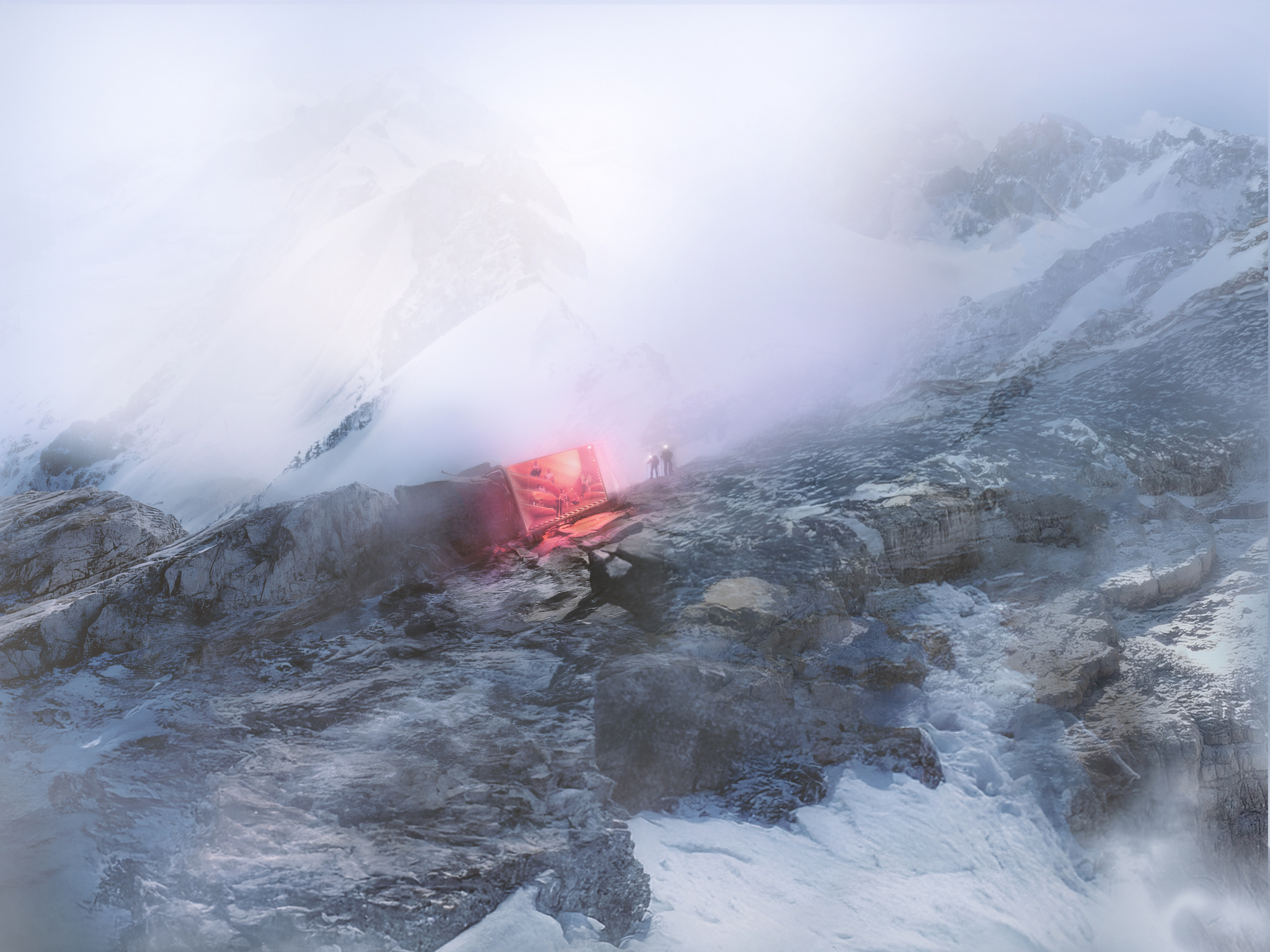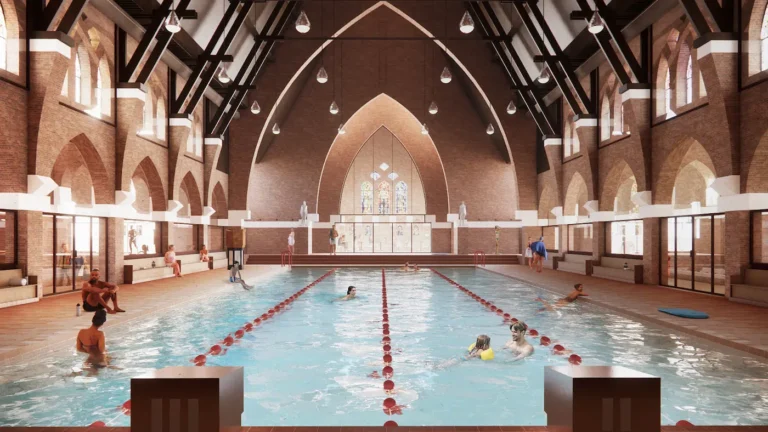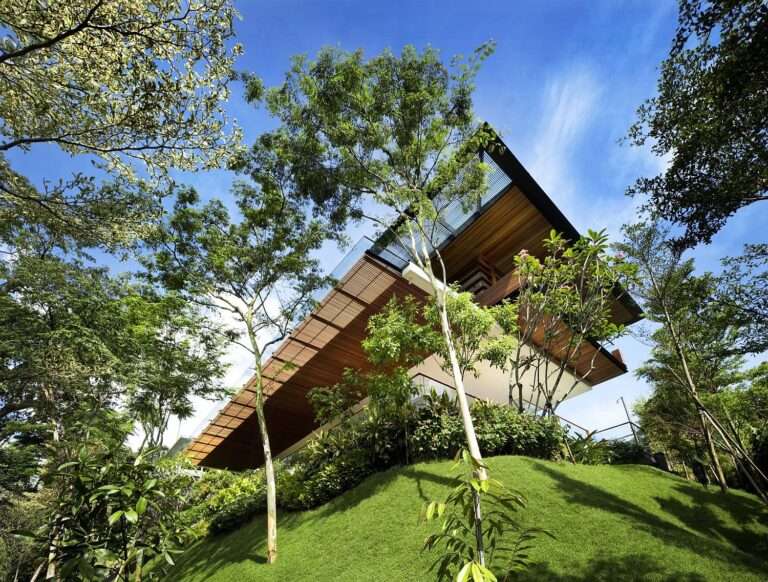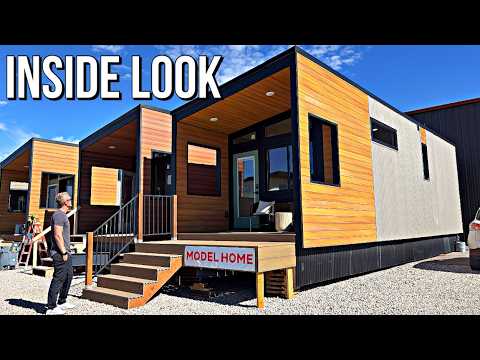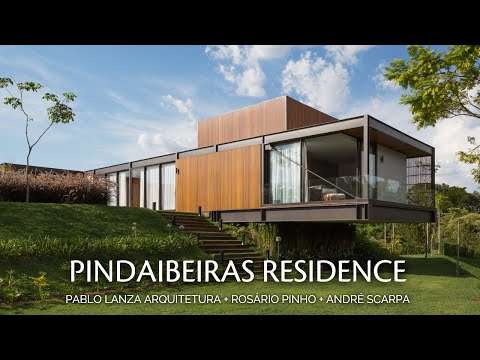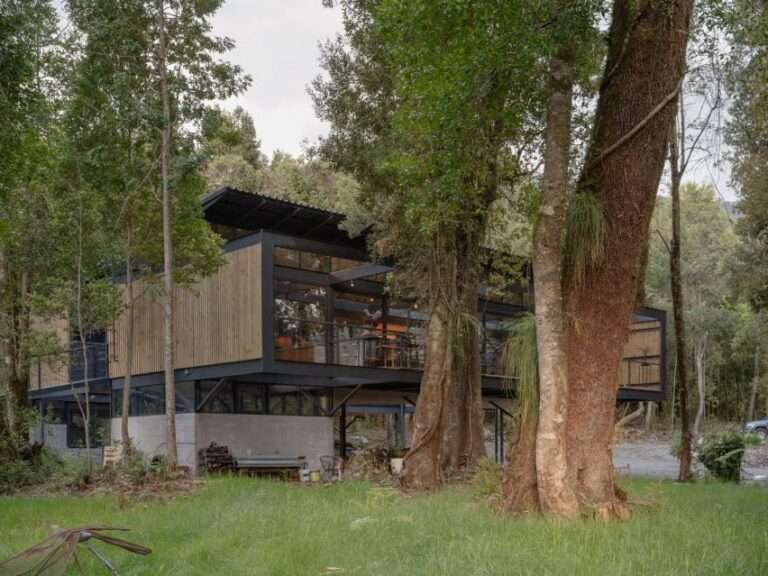

In just a few months, hundreds of athletes from around the world will descend upon Milan for the 2026 Winter Olympics. But, aside from winter sports, the Italian city will also be home to an innovative new bivouac designed by Carlo Ratti Associati (CRA), in collaboration with Salone del Mobile.Milano. Nestled in the nearby Alpine landscape, this bivouac isn’t simply an exercise in organic architecture. It’s also a meditation upon self-sufficiency, especially within such a rugged climate.
Set to debut as an urban pavilion during the Olympics, CRAs bivouac seamlessly blends into the surrounding mountains thanks to its unassuming profile. To accomplish this, the firm created a 3D scan of the rock formations in the Alps, which in turn informed the project’s sleek architectural forms. The shelter is further camouflaged due to its chosen materials, including cross-laminated timber, aerogel, and metal, all inspired by the crystalline formations of the Alps. The result is a minimalist structure that emphasizes rather than obstructs the snowy terrain, complete with a dramatic glass wall that breaks the boundaries between interior and exterior spaces.
At the heart of the project, however, is sustainability. The bivouac boasts a 5KW peak photovoltaic system with storage, providing power for all its energy needs, including network connectivity. Lacking access to natural water sources, the shelter also relies upon an air condensation system that produces several liters of portable water per day, offering climbers, trekkers, and other visitors to enjoy a constant stream of clean water, even in emergencies.
Finally, in stark contrast to traditional bivouacs that are brightly painted to combat foggy weather, CRA’s shelter employs a more subtle approach: a bright red light, which activates only in conditions with limited visibility.
“Unfortunately, today’s bivouacs often look like airships that have landed on our beautiful Alpine landscapes,” Carlo Ratti, co-founder of CRA, notes. “Here, we took the opposite approach: a structure that blends as much as possible with the surroundings.”
During the Olympics, the bivouac will be showcased as a temporary pavilion, celebrating Alpine culture, aesthetics, and architecture. Once the games conclude, the shelter will then be airlifted by helicopter to its final permanent site at an even higher altitude, where it’ll continue to serve climbers. This cyclical process complements the project’s emphasis upon green architecture and self-reliance, particularly as the Alps and the surrounding regions struggle amid climate change.
“The great Italian architect Gio Ponti once said that architecture is ‘like a crystal,’” Ratti shares. “We interpreted that literally in this [project], using digital fabrication to design a bivouac as if it were part of the natural rock formations that shape the Alps.”
To learn more about the upcoming Alpine bivouac, visit the Carlo Ratti Associati website.
For the 2026 Winter Olympics in Milan, Carlo Ratti Associati has designed a self-sufficient Alpine bivouac that can produce its own electricity and water.
